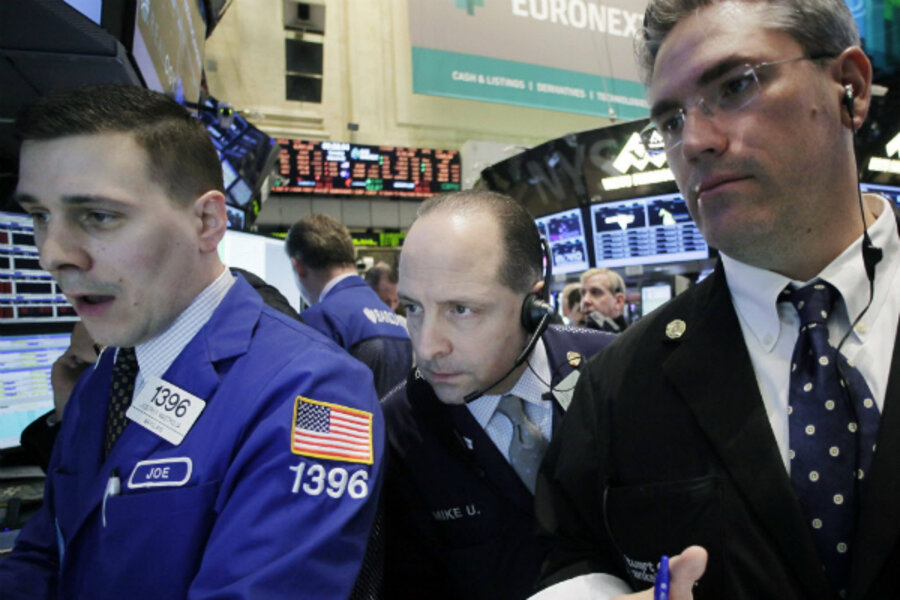Sign of good times? Stocks surpass 2007 peak as Dow hits all-time high.
Loading...
The Dow Jones Industrial Average surged to a new record level Tuesday, closing well above a peak set before the US economy entered a recession in 2007.
It’s been a long time coming.
Almost 5-1/2 years have elapsed since the Dow stock index last stood above 14164, in October 2007.
On Tuesday, buoyant investors pushed stock prices to that level and beyond, with the index closing at 14253.77 Tuesday, a gain of nearly 1 percent for the day.
The gains signal real progress for the economy but need to be viewed in a larger context that isn’t all rosy.
On the good side, the stock market’s verdict, for now, is that things like the “sequester” (federal spending cuts) and “fiscal cliff” deal (imposing some tax hikes) won’t throw the economy back into recession. That’s not a sure thing, but it’s the consensus view.
That makes investors hopeful that corporate profits will continue to rise – and it reflects a climate that bodes well for job creation and consumer spending.
“This [Dow record] signals rising confidence in the pace of recovery,” writes economist Michael Darda at MKM Partners, an investment firm in Stamford, Conn. “The market will likely make succession of new nominal, and eventually new real, all-time highs as the recovery unfolds over the next few years.”
At the same time, few Americans feel giddy about the current economy.
To some extent, there’s as disconnect between high corporate profits and numerous challenges facing everyday citizens. Unemployment remains high at 7.9 percent of the workforce. Households continue to struggle with high debt loads. And the finances of government (federal, state, and local) show signs of strain.
Almost two-thirds of Americans, according to a new Christian Science Monitor/TIPP poll, characterize themselves as “not very satisfied” or “not at all satisfied” with the general direction of the country. The dissatisfaction is actually higher among people who say they’re “investors” than among noninvestors.
Measured against inflation, moreover, the Dow index still isn’t fully at a new peak.
“The market would have to rise 7%-8% to reach the inflation adjusted highs seen in 2007 and 1999 respectively,” Mr. Darda said in his new analysis of the market.
He doesn’t buy into the view that the recent rally has pushed stock prices beyond their fundamental values.
But where the market heads next is a matter of hot debate among forecasters.
Fueling market gains in recent weeks have been factors such as corporate mergers (seen as good for profits), improving consumer finances (thanks in part to rising home prices), and continued monetary ease from the Federal Reserve.
Moreover, many investors are hopeful that the global environment will remain stable, with China’s economy growing and Europe avoiding a debt-related implosion, even as the euro zone navigates hard times.
Some market analysts warn against predicting big gains ahead for stocks.
Tax hikes and federal spending cuts promise to weigh on economic activity in the near term. High gasoline prices are also hurting consumer confidence, the new Monitor/TIPP poll found.
In a market commentary this week, strategist Jeffrey Kleintop of LPL Financial predicted that a new Dow high is “just part of an up-and-down range-bound pattern for stocks this year, echoing what we have seen in each of the past couple of years.”






